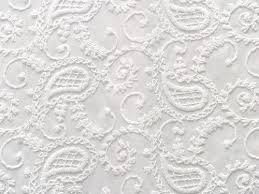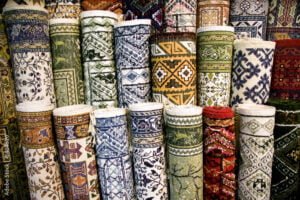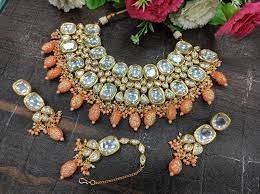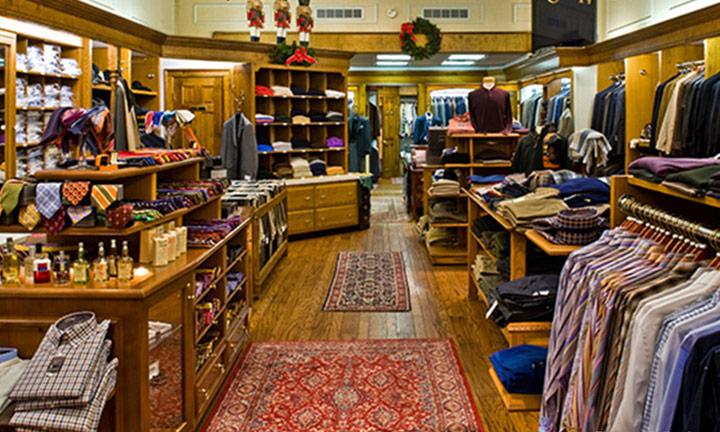No products in the cart.
Uttar Pradesh: Rich Heritage of Luxury Crafting Traditions
Responsible Tourism - Most luxurious crafts that have merged from the highly skilled artisans
The state of Uttar Pradesh has for centuries nurtured its fabulous wealth of artisanal traditions. First-time travellers will be blown away by the amazing range of hand crafting skills that have managed to navigate the pitfalls of modern-day challenges created by the Industrial Revolution. The efforts of the state government, supported by the enthusiasm of the private sector, have been pivotal in pulling back some of these traditions from the brink of extinction.
Let’s look into some of the most luxurious crafts that have emerged from the highly skilled artisans who have fiercely protected their ancestral traditions, despite all odds.
HANDLOOM WEAVES AND RICH EMBROIDERIES
Varanasi, the ancient Kashi, was long renowned for the manufacture of the finest cotton as well as those of silk and wool as far back as the 5th century or 6th century BC. Kashi cottons were smooth, bleached completely white, and their fibres were fine and soft. Mention of Zari and Varanasi’s brocade works surfaced from the early Mughal days.
Brocade Banquet
Zari Work
 Zari is an intricate art of weaving fine threads of gold or silver into fabrics largely made up of silk to create intricate and detailed patterns. Silk pit loom craftsmen produced the most gorgeous brocades in silk and gold. This fantastic weaving tradition is driven by a hand intensive artisanal process which involves molten silver being transformed into silver threads, then gilded with gold, and then woven into a textile of silk or grade cotton yarn. Also known as kinkhab (cloth of gold) this intensely decorative expression in gold/silver wire found voice in the most exquisite designs. The oldest reference for kinkhab, we discover in surprise despite the brouhaha about the Mughals, goes back to the Vedic times, over 3,000 years ago when mention was found in the Rig Veda. The strong Mughal influence can be seen in the choice of motifs which lean largely towards floral and hunting themes.
Zari is an intricate art of weaving fine threads of gold or silver into fabrics largely made up of silk to create intricate and detailed patterns. Silk pit loom craftsmen produced the most gorgeous brocades in silk and gold. This fantastic weaving tradition is driven by a hand intensive artisanal process which involves molten silver being transformed into silver threads, then gilded with gold, and then woven into a textile of silk or grade cotton yarn. Also known as kinkhab (cloth of gold) this intensely decorative expression in gold/silver wire found voice in the most exquisite designs. The oldest reference for kinkhab, we discover in surprise despite the brouhaha about the Mughals, goes back to the Vedic times, over 3,000 years ago when mention was found in the Rig Veda. The strong Mughal influence can be seen in the choice of motifs which lean largely towards floral and hunting themes.
Banarasi brocades, with their eloquent nuances picked out in the most lustrous silks, have long captured the imagination of royalty, aristocrats, the well-heeled and the sophisticated connoisseur down the ages. The oldest and only pure zari workshop in the world is in Varanasi. Some other versions which have captivated clients are Amru (decorated only with silk thread exemplified by Tanchoi sarees and Abrawan featuring translucent fabric woven from silk and organza as seen depicted by the lightweight Tarbana sarees.
It’s interesting to note that the delectable Banarasi handloom muslin traditions hark back to deep antiquity and were the stuff of inspiration for poets who likened them to woven air (baft hawa), flowing water (abrawan) and even morning dew (shabnam).
Varanasi’s Madanpura and Alaipura areas are fabled for their brocade work.
Zardozi
 Embroideries in gold and silver thread are further enhanced with the embellishments of precious gemstones sewn into the fabric to create an intensely ornate product. The finest collation of these luxurious hand-sewn works come from Lucknow, Varanasi, Agra, and surprisingly Bareilly.
Embroideries in gold and silver thread are further enhanced with the embellishments of precious gemstones sewn into the fabric to create an intensely ornate product. The finest collation of these luxurious hand-sewn works come from Lucknow, Varanasi, Agra, and surprisingly Bareilly.
Chikankari Embroidery
 Claimant to introducing and perpetuating the fine art of chikankari is the Mughal Empress Nur Jehan, a true connoisseur of all things luxurious as was her husband emperor Jehangir. The courtly life of the Nawabs of Lucknow is said to have given further heft to this exquisite needlework tradition. Rich embroideries were carried out by experts in white thread. on cotton, muslin or cambric. Chikan embroidery employs 32 types of stitches, some popular ones being Tepchi, Bakhiya, Murri, Phanda, Jaali, etc.
Claimant to introducing and perpetuating the fine art of chikankari is the Mughal Empress Nur Jehan, a true connoisseur of all things luxurious as was her husband emperor Jehangir. The courtly life of the Nawabs of Lucknow is said to have given further heft to this exquisite needlework tradition. Rich embroideries were carried out by experts in white thread. on cotton, muslin or cambric. Chikan embroidery employs 32 types of stitches, some popular ones being Tepchi, Bakhiya, Murri, Phanda, Jaali, etc.
Today, of course, the spectrum has widened considerably to incorporate coloured threads and fabrics ranging from chiffon, muslin, organza, organdie, voiles, viscose, georgette, polyester georgette, cotton crepe and net. SEWA, or the Self-Employed Women’s Association) has played a pivotal role in reviving this painstaking embroidery tradition which was on the verge of getting lost. It is noteworthy that during the era of the Nawabs the Master craftsmen were all men! Today, Lucknow enjoys undisputed supremacy in producing India´s finest Chikan embroidery. Visitors can pick up items such as chikan embroidered sarees, dupattas, table linen and kurtas. Its international footprint continues to show remarkable resonance with high-end stores like Harrods and Selfridges in London putting the spotlight on it as “Indian lace”!
Carpets and Durrie Weaving
 Uttar Pradesh’s towns of Bhadohi, Mirzapur and Khamaria have a long history of producing hand-knotted carpets. It comes as a surprise for many that Bhadohi takes care of 90 per cent of India’s carpet requirements. For international markets, the artificial silk carpets woven here are a less expensive option than the highly-priced pure silk carpets. Mirzapur is famed for its handmade rugs following the panja technique which involves a metallic claw coming into play during the weaving process. The geometric patterns used to create motifs from the animal and avifaunal kingdom make these durees, produced in jewel tones, very popular.
Uttar Pradesh’s towns of Bhadohi, Mirzapur and Khamaria have a long history of producing hand-knotted carpets. It comes as a surprise for many that Bhadohi takes care of 90 per cent of India’s carpet requirements. For international markets, the artificial silk carpets woven here are a less expensive option than the highly-priced pure silk carpets. Mirzapur is famed for its handmade rugs following the panja technique which involves a metallic claw coming into play during the weaving process. The geometric patterns used to create motifs from the animal and avifaunal kingdom make these durees, produced in jewel tones, very popular.
Sitapur is a Mughal-era hub for handwoven rugs, durries and bathmats. The cotton and woollen carpets made in Laharpur and Khairabad in the district are pan India as well as abroad. Agra became a popular carpet weaving centre during Mughal rule. It produces both woollen and cotton varieties as does Shahjehanpur.
Minakari Jewellery

The most exquisite enamel jewellery is produced in Varanasi and Lucknow. The tradition is said to have been introduced by the luxury-loving Mughals. Mina work refers to the art of decorating a metal surface by fusing mineral substances on it. The process was largely applied to Kundan jewellery— in which ornaments were studded with gemstones set with a layer of gold foil between the stone and the mount on one side, while the reverse is lavishly enamelled using the mina technique. Varanasi was long reputed for its pink or ‘gulabi’ mina work, as opposed to the red used in Rajasthan’s Jaipuri minakari work. The colours used in gulabi meenakari are natural and leadless dyes. Originally mina art was carried out on gold, but later silver became a good alternative. Explore the Gulabi Minakari workrooms located in small lanes near Gai Ghat. You’ll discover that now you can pick up Minakari work in three forms– Ek Rang Khula Meena—only gold outlines are exposed and a single transparent colour is used; Panch Rangi Meena features five colours of red, white, green, light blue and dark blue and of course the traditional Gulabi Meena in which pink is the leading colour.
Marble Inlay

By Direct Creat
Some of the most definitive voices of Uttar Pradesh’s artisanal skills are reflected in the iconic Taj Mahal. From exquisite calligraphy to marble carving to traditional Parchinkari or the Italian-style Renaissance period Pietra Dura inlay work capture the gaze any which way you turn at this historic monument. Visitors are at a loss to focus when they encounter the Taj’s rich ornamentation.
Agra’s Parchinkari work, which involves very precise and minute inlay work caught the spotlight when rendered in fine detailing in this pristine white marble edifice. The inlay of precious stone in the marble found its way to the cenotaphs of Shah Jahan and Mumtaz Mahal. You can visit one of the workshops of the remaining artisans in Agra who still ply this ancestral craft. Visitors can pick up a range of items featuring inlay work including tabletops, marble-carved elephants, jewellery boxes and other decorative items. Check out the shops lining Agra’s Gokulpura area. For a more immersive experience, you might want to ask them if you can watch the craftsman at work.
Perfume Making
 Uttar Pradesh has a long and robust tradition of perfume or ittar/attar making. The nucleus of this costly activity was Kannuaj with its vast swathes of rose farms. Perfumes were being created here as far back as the 6th century. Perfume making was a costly affair, involving the use of expensive products like sandalwood, agarwood, camphor, musk, and saffron.
Uttar Pradesh has a long and robust tradition of perfume or ittar/attar making. The nucleus of this costly activity was Kannuaj with its vast swathes of rose farms. Perfumes were being created here as far back as the 6th century. Perfume making was a costly affair, involving the use of expensive products like sandalwood, agarwood, camphor, musk, and saffron.
India’s ‘Perfume Capital’, as Kannauj is known worldwide, continues to fiercely protect its ancient home-grown perfume-making technique known as degh-bapka which involves the use of copper stills fuelled by wood and cow dung. The base of Indian attars has traditionally been sandalwood oil, unlike in the West where alcohol is used in perfume production. Trawl the gullies of Bara Bazaar, to explore the dense line-up of attar-selling shops to find the scent of your liking. Top sellers are Mitti (scent of rain on earth) as well as jasmine and rose-based attars.
















